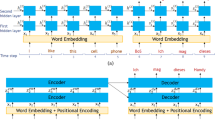Abstract
The main aim of this paper is to propose a new neural algorithm to perform a segmentation of an observed scene in regions corresponding to different moving objects, by analysing a time-varying image sequence. The method consists of a classification step, where the motion of small patches is recovered through an optimisation approach, and a segmen-tation step merging neighbouring patches characterised by the same motion. Classification of motion is performed without optical flow computation. Three-dimensional motion parameter estimates are obtained directly from the spatial and temporal image gradients by minimising an appropriate energy function with a Hopfield-like neural network. Network convergence is accelerated by integrating the quantitative estimation of the motion parameters with a qualitative estimate of dominant motion using the geometric theory of differential equations.
Similar content being viewed by others
Author information
Authors and Affiliations
Rights and permissions
About this article
Cite this article
Branca, A., Convertino, G., Stella, F. et al. A Neural Paradigm for Motion Understanding. NCA 8, 309–322 (1999). https://doi.org/10.1007/s005210050037
Published:
Issue Date:
DOI: https://doi.org/10.1007/s005210050037




